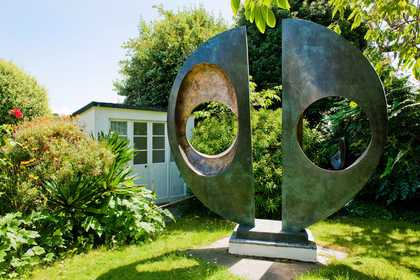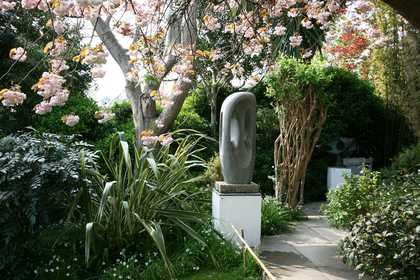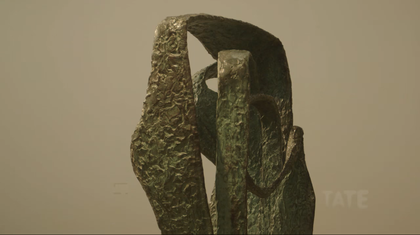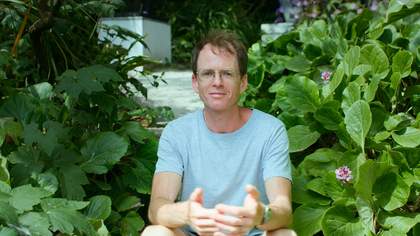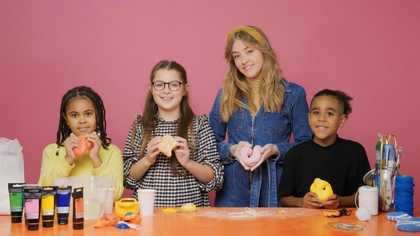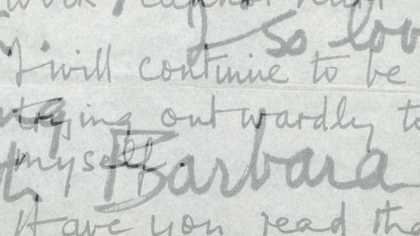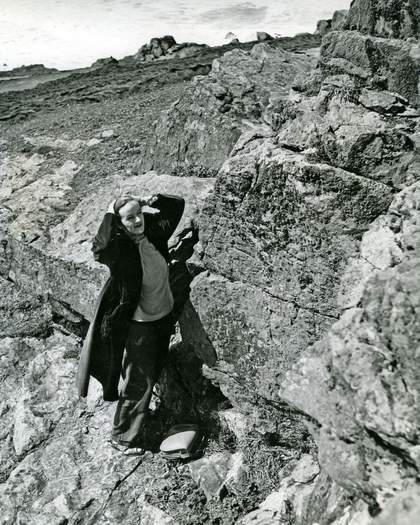Barbara Hepworth was often credited as being one of the most influential artists working in the UK in the 20th century. She made constant reference to the natural landscapes that surrounded her in her adopted home of Cornwall.
Hepworth moved to St Ives in 1939 with her family and stayed here for the rest of her life and the town of St Ives and the surrounding landscapes have influenced her works in numerous and interesting ways.
As soon as they moved down here, Hepworth fell in love with this Cornish landscape. So this bit between St Ives, Penzance, Lands End. You’ve got these big granite boulders perched on top of hilltops and then you’ve also got these ancient monuments. Nobody really knows what they were used for and so that allows the artist to be able to come in and there’s room for the imagination to work in terms of what are they? What were they used for? And so she just fell in love with that.
In 1949, Hepworth bought Trewyn Studio, the Barbara Hepworth Museum and Sculpture Garden as it is known now. Which was a really transformative moment in her practice.
Until she moved to the town, she really didn’t have a place to work very well and I think it gave her so much confidence. She was very much ahead of her time in the things that she wanted to do.
When you enter this space, there is a house she used as her home. There’s the most beautiful garden, which she personally nurtured. One thing that it did allow her was that she could carve outside, so the weather is is a big factor. The fact that she could witness the cycles of the sun and the moon, which occur in many of her prints in later years.
For her Trewyn was an incredibly special place and even today it’s like an oasis in the middle of St Ives.
In the 1950s, Hepworth began to explore the potential of working in metal and particularly bronze. Curve Form Trevalgan, the work is named after Trevalgan Hill which is a hill just behind the town of St Ives which overlooks the Celtic Sea. She was inspired by the experience of standing atop this hill and not only looking out to sea along a valley, but also feelings of the vast landscape that surrounded her.
She’s trying to communicate feelings of the human figure in the landscape.
When you look at the Hepworth sculptures, it’s not about, what does it look like? It’s about, how does it make me feel?
She acquired a second studio called the Palais De Danse, which is exactly opposite the entrance of the Barbara Hepworth Museum and Sculpture Garden and this second studio gave her the possibility to work in a very large scale indoors, as well as outdoors, and it was there that she created some of her most important public commissions.
One of the reasons that she bought the Palais De Danse was that she could construct these bigger sculptures. She needs to work horizontally on the floor, because of these big plaster panels. You can’t make them any other way.
Her dad was an engineer. If you look at some of those big sculptures that she’s got, it’s about welding. It’s about using really practical engineering skills. She’s got this very creative, intuitive, feeling side and then this really practical, logical, engineer’s brain about construction and she’s able to marry the two to create these big sculptures that are still standing today.
It’s said that she made more sculptures in the 1960s than in the rest of her life combined. She became very interested in technological advances around space travel. Partially inspired by her visit to the Goonhilly Earth station on the Lizard in Cornwall and there are works that actually might be seen to directly reference the satellite dishes that she saw at Goonhilly Earth station.
Goonhilly, the first dish was constructed in 1962 and she was invited to go and stand in the first big dish and she said it was the most sort of magical and surreal experience of just standing there. This idea of space itself is also this place of the imagination, where you can let your imagination run riot.
You’ve got this connection of both these amazing forms that Hepworth would constantly use in her work. You know, this sort of circular enclosed form and then this upright standing form and one’s completely ancient and Neolithic and the other one is absolutely the cutting edge of technology.
The gender landscape was really tough. It was a very male dominated world for the modern artists. I’m amazed how she kept going really in the face of a lot of negativity.
I always say how privileged we all feel that she lived here. When you have an artist who is so closely linked with a place, that gives you a lasting idea about her role and her importance.
